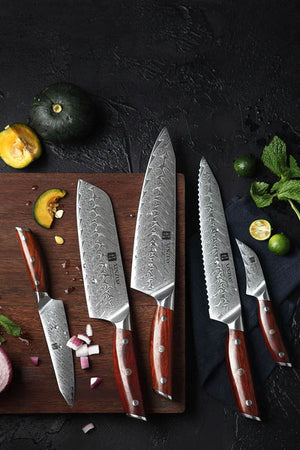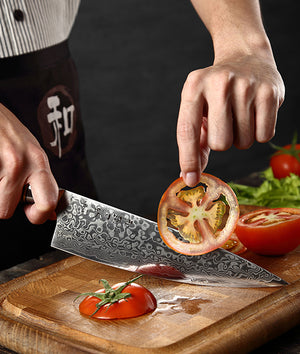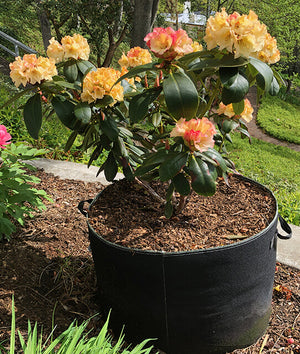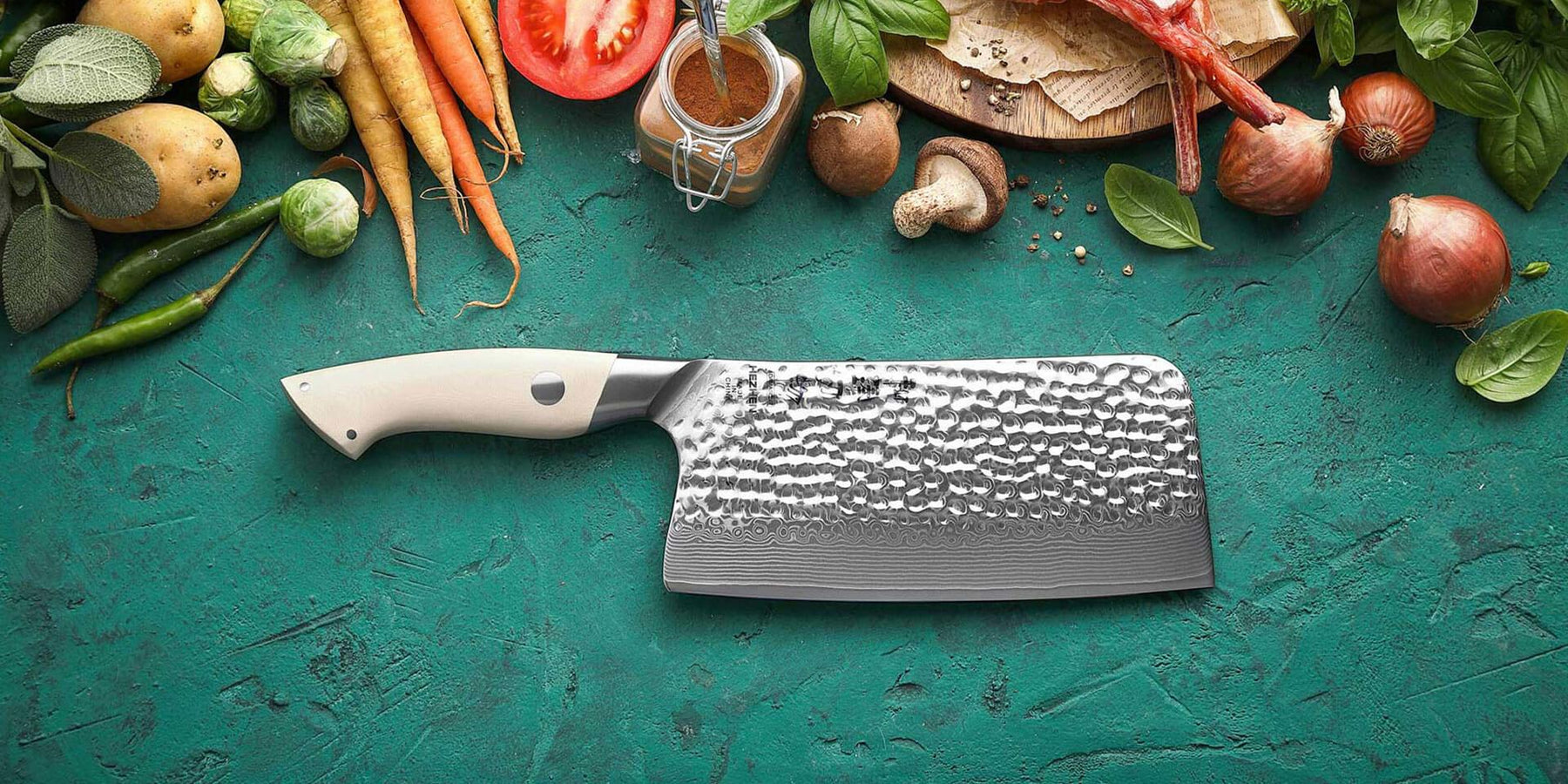
What is a Meat Cleaver and How Do You Use It?
In the most basic terms, a meat cleaver is a large, strong knife that is specifically designed to be able to break down and work with large cuts of meat. It’s easily one of, if not the, largest knives you’ll have in your kitchen and it’s also a fair bit heavier than most of your everyday knives – and for good reason.
A meat cleaver is best known for its rectangular blade that boasts a large surface area. The knife’s handle is also quite big (in proportion to the blade), and the weight of the knife as a whole is balanced out between the blade and the handle. Naturally, because of the unusual shape of a meat cleaver, it’s important that you understand exactly how it’s supposed to be used and learn the special techniques associated with it.
Now, a meat cleaver is primarily intended to work with large cuts of meat – chopping or slicing it and removing it from the bone. While it can work with some cartilage and perhaps small (and relatively soft) bones, it’s not, intended for breaking down big bones and carcasses. You can use it with meat, fish, vegetables, and more, but we’ll get into the details of that shortly.
If you want to learn more about meat cleavers – that is, exactly what they are, how you use them, and what they can be used for – stick around while we explore all aspects of this kitchen tool.
Properties of a Meat Cleaver
One thing we know about meat cleavers, generally speaking at least, is that they’re pretty large and they have rectangular blades. Most people associate them with butchers (and rightly so), and they’re pretty powerful.
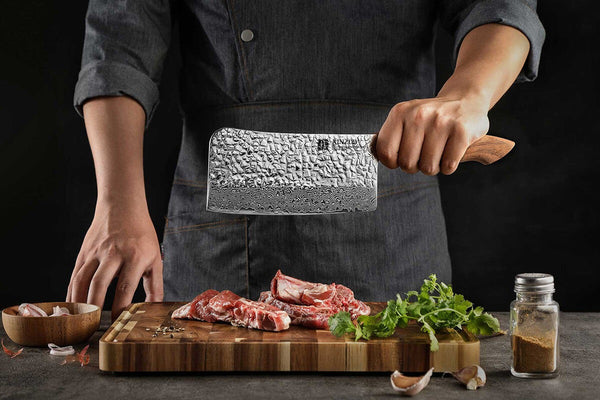
But, apart from these basic and obvious facts, what is a meat cleaver and what makes it different to other knives? Well, while all knives may have a certain degree of variation from one to the next, even if they’re the same type, there are certain properties that they’ll definitely have in common.
So, we’re going to tell you all about them. That way, you’ll be able to easily identify a meat cleaver when you see one, and you’ll know what to look out for when you’re shopping.
Here are the most important properties of a classic meat cleaver:
- Blade Length: On average, the blades of meat cleavers are between six to eight inches long, but most commonly, they’re about six to seven inches long.
- Blade Shape: Meat cleavers boast a rectangular-shaped blade that may be described as a big wedge. They mostly have a straight edge, but some have a slightly curved edge.
- Blade Thickness: The blades are normally pretty thick, because thickness contributes to strength and durability in knives. Since a meat cleaver is made for working with meat and some bone, strength is essential, thus, so is the thickness of the blade. This is true for most western meat cleavers, but don’t conflate western (or German) cleavers with Chinese meat cleavers – the latter are quite different, and they have thinner blades.
- Blade Material: Since strength is one of the most important attributes of a meat cleaver, they’re often made from various compositions of steel – carbon or high carbon steel. This allows them great strength and durability.
- Knife Weight: Western meat cleavers are known to be fairly heavy, especially since their blades are quite thick. The immense weight of a heavy-duty meat cleaver contributes to the specific techniques that need to be used while working with it.
- Tang: All knives vary, but since the blades of meat cleavers tend to be very heavy, weight distribution is incredibly important. In western meat cleavers, weight is pretty evenly distributed between the handle and blade by means of a full tang. Sometimes, they have a partial tang, but this is less common and is more likely in a Chinese meat cleaver. That’s because a Chinese meat cleaver relies on having a blade that’s heavier than the handle.
- Handle: The handle of a meat cleaver may be made from a variety of different materials, it mostly depends on ergonomics and aesthetics, since they tend to all have full tangs anyway, so the weight of the material isn’t too important. Most often, handles are made from wood or steel.
Uses of a Meat Cleaver
Depending on the range of knives you have in your kitchen – whether you have several different types or only a few to choose from – the way in which you use a meat cleaver may be different to somebody else.
However, there are a few standard uses that are true across the board. Here are the best and most common uses of a meat cleaver:
- Sectioning Meat and Poultry: Since a meat cleaver is so big, thick, and strong, its primary use is slicing and sectioning different types of meat and poultry. This can mean cutting meat off the bone or slicing it up. While it’s not ideal to use a meat cleaver to cut through big, tough bones, it can be used to work with relatively small and soft bones if necessary.
- Scaling Fish: You may be surprised to hear that a meat cleaver can actually be great for scaling fish, but we’re talking about large fish. That’s because sometimes, when working with big fish, the surface area of a filleting knife or something similar isn’t quite big enough for the job. So, if that’s a problem for you, a meat cleaver may be the perfect tool for the job. The only thig to bear in mind is that the blade is far more rigid than specialized fish and sashimi knives, so it’ll take a fair bit of skill and finesse to get the scaling process right.
- Preparing Vegetables: You could use a meat cleaver for just about any type of vegetable if you really wanted to, but it would be most useful with larger things like pumpkin or butternut that are difficult to manage with a smaller knife. From there, you can use it chop, slice, and dice as you please. It can even be used for things like onions, as long as you have enough control over the knife.
- Transferring Food: Since the blade of a meat cleaver has a large surface area, it can be great for transferring food (like onion or garlic) from your chopping board to the frying pan or wherever else it needs to go.
- Crushing Garlic: Again, since the knife is large and thick, it’s super robust, and the big surface area of the blade can be used to crush cloves of garlic easily.
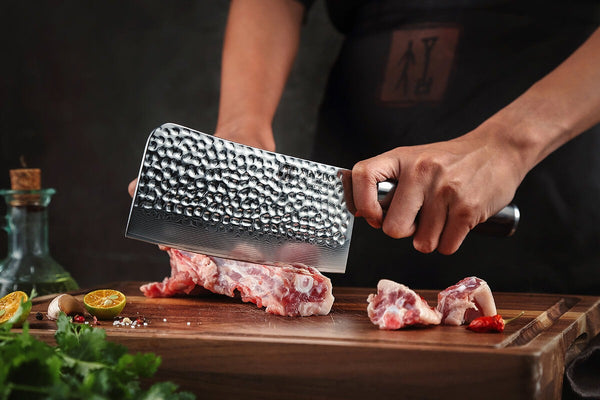
How Do You Use a Meat Cleaver?
If you want to get the most out of it and be safe in the process, it’s a good idea to understand the proper techniques as well as how the weight distribution of a meat cleaver knife works.
There are a few different techniques you can use depending on what you’re working with:
- Pinch Grip: Hold the handle with between your thumb and your index finger and wrap your other fingers around the handle for stability. This is great for slicing food, and you can almost use a rocking type of motion as you would with a chef’s knife. You can do this with anything ranging from vegetables to various cuts of meat, like ribs or a backbone. You can also use your non-dominant hand for stabilization if you like.
- Power Grip: If you want to chop up poultry or a cut of meat, for instance, hold the handle as if you’re going to shake somebody’s hand. If you like, you can place your thumb on the spine.
- Chopping: If accuracy isn’t your priority, then chopping with a meat cleaver is the best and most efficient way to work through meat. You simply place the meat on the cutting board and using your wrist, you allow the top third of the blade to come down on the food. Make sure your other hand is well out the way, and you don’t need to put all your strength into it – it’ll still be very effective.
Remember, there are other ways in which you can use a meat cleaver, but these are the main techniques.
Frequently Asked Questions About Meat Cleavers
Why Does a Meat Cleaver Have a Hole in it?
A some meat cleavers have a hole at the top of the knife blade. Usually found in a butcher shop. This is simply to allow you to hang the blade for easy and safe storage. For home use I find that most chef’s use a magnetic board or a knife block for safe storage, ascetics and close to the action.
How Do You Clean a Meat Cleaver?
The best way to clean any high-quality knife is by hand using warm, soapy water and a non-abrasive sponge. Then, dry it with a dishcloth.
Can a Cleaver Cut Bone?
Yes, it can, but only smaller or relatively soft bone and cartilage. Do not use it to break down large and hard bones.
Are Meat Cleavers Expensive?
It all depends on the exact knife you choose to go with. Price will fluctuate based on the material of the blade, where it’s produced, and so on. Essentially, the answer is yes and no, but it doesn’t have to be – you can certainly find options that are both reasonably priced and good quality.
Final Thoughts on Meat Cleavers
Well, there you have it. We’ve told you all about what a meat cleaver is, how you use it, and what it can be used for.
So now, if you’re looking for a meat cleaver for sale, you’re in the right place. Shop the Bamboo Guy’s collection of the best meat cleavers on the market today. Remember our slogan “The Best Foer Less, Shipped To Your Door”.
